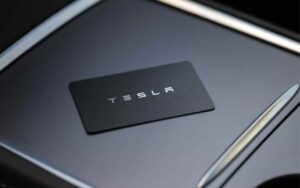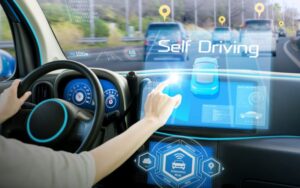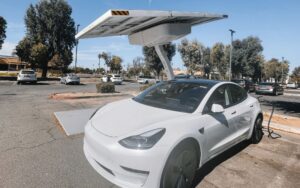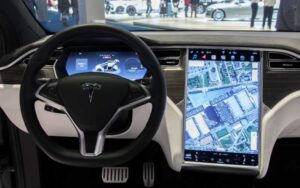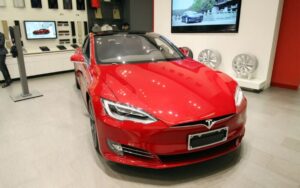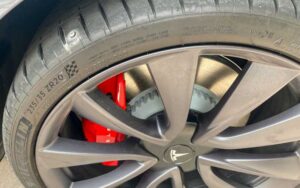How To Put Tesla in Park? (All You Need To Know)
Last updated on April 18th, 2023 at 11:17 pm
Many Tesla owners have expressed mixed reactions towards the Autopark feature added to newer Tesla models.
Some people consider it a modern technology suitable for the 21st century. But, amazingly, the car can park on its own.
However, some Tesla owners are disappointed that their models do not have the “Park” feature. Nevertheless, this excellent feature proves how technology will evolve in the coming years.
To put Tesla in Park, your car must have the ‘Summon’ feature. Once you reach your destination, step out of the vehicle, and it will automatically enter park mode. Undoubtedly, Tesla’s Smart Summon feature is quite useful, but its numerous limitations have caused its usage to be limited in real-world cases.
This article explores these features and their limitations by discussing how to put your Tesla in the park. Read on to discover more.
How Do You Put Tesla in Park Mode?
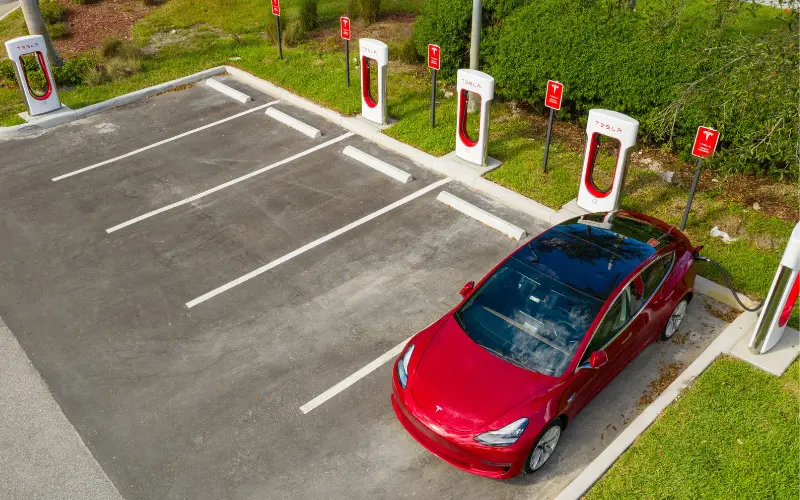
Interestingly, the Tesla Model 3 can park by itself. This feature is called Summon and is currently available on the new sedan.
It’s a feature that allows access to the car’s independent driving capabilities and connectivity.
Asides from using the Summon feature to put the car in Park Mode, you can also use it to control garage doors.
Even in this instance, a driver doesn’t need to be behind the wheel or control the car remotely.
To put Tesla in Park Mode, all you need to do is: “Once you reach your destination, step out of the vehicle, and it will automatically enter park mode.
Besides the ‘Park Mode’ feature, other notable features include parking lot capabilities (parking lot stack), Reverse summons, and the Full Self Driving Beta.
How Do You Engage Tesla Parking Brakes?
Whenever you press Park on your Tesla, you expect the vehicle to turn on the parking brake. The brake is merely software that keeps the car parked for as long as you wish.
You can also engage the Tesla parking brakes by pressing them manually. This feature works best on steep hills to offer additional protection.
As expected, automatic car owners are used to their cars being in Park. In addition, these automated vehicles, including Tesla, sometimes have hand brakes.
To activate the parking brake:
- Turn on the touchscreen
- Select “Controls”
- Then “Safety”
- Choose “Parking Brake”
The above method applies to the revised Tesla Model S. On vehicles that have the drive select stalk.
The best way to engage the brake is to long-press the park button (at the rear of the drive select) for a few seconds or until “P” pops up in red on the screen.
The car will only go into Park Mode if the driver gets out of the car or engages the brake pedal for up to ten minutes when the vehicle is in gear and stops.
However, searching for the brake option on the touchscreen is best. Mainly because it’s easy to release the brakes in case of issues or if the vehicle needs towing.
Note that the Parking Brakes on Model 3 (Tesla) engage automatically every time the vehicle is in “Park Mode.”
Also, Tesla owners should consult their owner manual for additional details concerning their car model.
How to Turn On an Autopark in Tesla?
The Tesla Autopark uses data to make parking on public roads (with perpendicular and parallel parking spaces) more accessible. Unfortunately, it doesn’t function for angled parking spaces.
You must do some things for “Autopark” to serve its purpose effectively in your Tesla. They include:
- Make sure to clean all sensors and cameras. Dirty or dull markings can affect Autopark’s performance. In addition, these cameras help determine the car’s closeness to other vehicles, objects, etc.
- Never use “Autopark” if anything (like a trailer or bike) is attached to the towing hitch.
To turn on Autopark in Tesla, follow the steps below:
#1. Monitor the Touchscreen
It is essential to monitor the touchscreen to determine whether Autopark has found a parking space, especially when driving on a public road.
If the car detects an available parking space, its touchscreen will display a blinking icon that indicates parking.
Note that the icon only appears of the car’s positioning or the surrounding area, allowing Autopark to detect a befitting driving path.
If Autopark can’t detect a path, reposition the car, park manually, or search for another parking space.
#2. Confirm the Safety of the Parking Space
Ensure you confirm whether the parking space Autopark detects is suitable and safe.
To check, stop at precisely one car length ahead of the parking space, just as you would in a perpendicular or parallel parking space.
#3. Park Appropriately
Slowly release the steering wheel and shift the gear to Reverse. Then, press “Start Autopark” on the touchscreen.
Autopark will automatically display a message once the parking is complete.
Note that if your Tesla is a Model 3 and you press the brake pedal when Autopark is in use, it’ll pause parking until you press “Resume Parking” on the touchscreen.
While trying to park, check your surroundings at intervals. Be alert so you can apply the brakes to avoid colliding with pedestrians, vehicles, etc.
In addition, depending on your location, car software version, and configuration, your car may not have the Autopark feature.
Autopark usually cancels when you move the steering wheel manually or press “cancel” on the touchscreen.
It also cancels when:
- The car door is open.
- The parking sequence is more than seven moves
- You Press the accelerator pedal
- There is an automatic emergency braking
How to Park with Tesla Autopark?
One of the easiest ways to park your Tesla is with Autopark.
Below are the steps to follow to park with Tesla Autopark:
#1. Position your Tesla in Line
Once you find a perfect parking space, move forward just as you would in parallel parking.
Park beside the car in front of you slowly until “P” pops up on your touchscreen. The sign shows that the vehicle is set to parallel Park by itself.
To proceed to the next step, move the gear to Reverse while pressing the brakes firmly.
#2. Start the Tesla Autopark
Immediately after the car is correctly aligned, there’ll be a blinking indicator on the touchscreen and instrument cluster.
You’ll see a blue “start” button. Once you press the button, the parking process will begin. An alarm message will pop up if you press the brake.
#3. Watch the Car Park
You can allow the steering wheel to do its work on its own. Then, the car will begin moving into the designated parking space.
You’ll see the “Autopark in Progress” display on the touchscreen and instrument cluster.
There are a few advantages and disadvantages you should know about Autopark:
| S/N | Advantages | Disadvantages |
|---|---|---|
| 1 | Good sense of security | The high cost (including construction) |
| 2 | Great parking efficiency | High maintenance cost |
| 3 | Minimal chances for vehicle vandalism | High chances of vehicle breakdown |
| 4 | Reduces the level of emissions | Difficulty in navigation for new users |
What Happens When You Press Park on a Tesla While Driving?
When you press the ‘park’ button at high speed, it’ll beep and apply the rear brakes briefly. Unfortunately, it doesn’t lock the brakes on dry roads but seems to bypass the ABS.
Once you put your car in Park, it’ll stop the rear wheels from turning.
You can rely on it n cases of emergency. It releases the brakes immediately once you release the button. Note that if you’re on a speed of below five mph, it will go into Park.
This Emergency Brake can be used when parking on a hill or if you’re driving and your brake pedal is failing.

Hey, I’m Michael Davis, a 35-year-old with a degree and a love for cars and tech. Since I was a kid, cars have been my thing—so much that I even thought they ran on magic beans! Fast forward, and I’ve built Vehicle Army, your one-stop-shop for easy-to-understand car facts.

